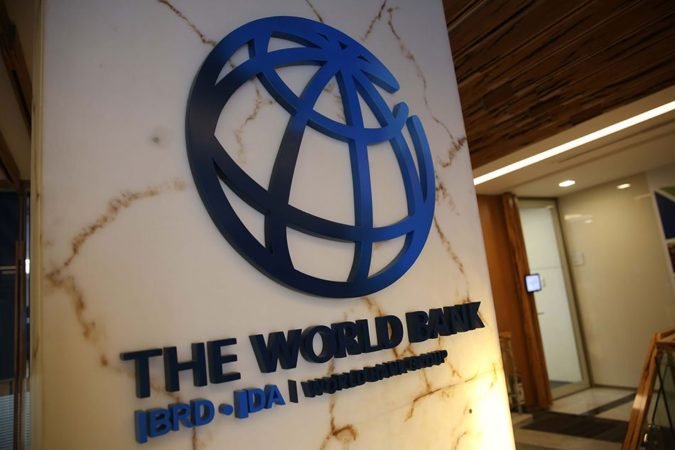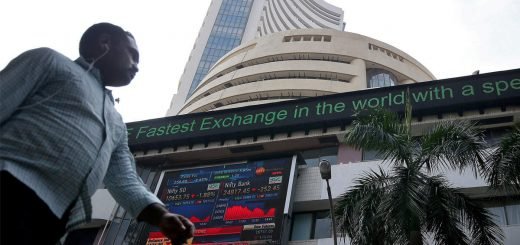World Bank slashed its growth forecast for India from 7.5% to 6%

The World Bank on Sunday slashed its growth forecast for India from 7.5 percent to 6 percent, warning that the “severe” slowdown could further weaken the country’s stuttering financial sector.
In line with a global downward trend, growth in South Asia is projected to slow to 5.9 percent in 2019, down 1.1 percentage points from April 2019 estimates, casting uncertainty about a rebound in the short term, says the World Bank in its twice-a-year regional economic update.
| Real GDP growth in South Asia | 2018 | 2019 (e) | 2020 (f) | 2021 (f) |
| Afghanistan (CY) | 1.8 | 2.5 | 3.0 | 3.5 |
| Bangladesh (FY) | 7.9 | 8.1 | 7.2 | 7.3 |
| Bhutan (FY) | 4.6 | 5.0 | 7.4 | 5.9 |
| India (FY) | 6.8 | 6.0 | 6.9 | 7.2 |
| Maldives (CY) | 6.7 | 5.2 | 5.5 | 5.6 |
| Nepal (FY) | 6.7 | 7.1 | 6.4 | 6.5 |
| Pakistan (FY, factor prices) | 5.5 | 3.3 | 2.4 | 3.0 |
| Sri Lanka (CY) | 3.2 | 2.7 | 3.3 | 3.7 |
Source: World Bank. GDP: Gross Domestic Product, CY: Calendar Year, FY: Fiscal Year, e: Estimate f: Forecast; in Bangladesh, Bhutan, Nepal, and Pakistan, 2019 refers to FY2018/19 and ended in June 2019. For India, 2019 refers to FY2019/20 and will end in March 2020.
Afghanistan: with improved farming conditions and assuming political stability after the elections, growth is expected to recover and reach 3 percent in 2020 and 3.5 percent in 2021. However, the outlook is highly vulnerable and may be affected by deteriorating confidence due to uncertainty around international security assistance, election-related violence, and peace negotiations with the Taliban.
Bangladesh: GDP is projected to moderate to 7.2 percent this fiscal year and 7.3 percent the following one. The outlook is clouded by rising financial sector vulnerability, but the economy is likely to maintain growth above 7 percent, supported by a robust macroeconomic framework, political stability, and strong public investments.
Bhutan: GDP growth is expected to jump to 7.4 percent this fiscal year with the commissioning of Mangdechhu, a new hydropower plant, and the completion of the maintenance of Tala, another one. Growth in fiscal year 2021 is forecast just below 6 percent on the base of strong tourism growth and increased revenue from the existing power plants.
India: After the broad-based deceleration in the first quarters of this fiscal year, growth is projected to fall to 6.0 this fiscal year. Growth is then expected to gradually recover to 6.9 percent in fiscal year 2020/21 and to 7.2 percent in the following year.
Maldives: Growth is expected to reach 5.2 percent in 2019, due to a slowdown in construction following the completion of the international airport and a connecting bridge. However, with support from new infrastructure investment and the expansion of tourism, growth is expected to pick up again to an average of 5.6 percent over the forecast horizon.
Nepal: GDP growth is projected to average 6.5 percent over this and next fiscal year, backed by strong services and construction activity due to rising tourist arrivals and higher public spending.
Pakistan: Growth is projected to deteriorate further to 2.4 percent this fiscal year, as monetary policy remains tight, and the planned fiscal consolidation will compress domestic demand. The program signed with the IMF is expected to help growth recover from fiscal year 2021-22 onwards.
Sri Lanka: Growth is expected to soften to 2.7 percent in 2019. However, supported by recovering investment and exports, as the security challenges and political uncertainty of last year dissipate, it is projected to reach 3.3 percent in 2020 and 3.7 percent in 2021.
Indian Economy
India’s industrial output also shrank at its fastest rate in more than six years in August, data released last week showed, indicating that a slew of government measures had yet to underpin a recovery.
Asia’s third-largest economy is currently growing at its slowest pace in six years, expanding by just 5% in the April-June quarter, hit by flagging consumer demand and a slackening in government spending.
In an effort to kick-start the economy, India’s central bank has cut interest rates five times this year and underlined the challenge for policymakers by downgrading its growth forecast to 6.1% from 6.9% earlier this month.
Last week, rating agency Moody’s Investors Service lowered its growth forecast for India to 5.8% for the current fiscal year from 6.2%, adding that a long period of weak growth will hamper the government’s fiscal consolidation plans.
The World Bank’s latest forecast also underlined similar concerns linked to slowing growth and New Delhi’s decision to cut the corporate tax rate, which will cost about 1.5 trillion rupees in tax revenues.
“While the authorities have shown steadfast commitment to fiscal prudence, the significant growth deceleration as well as the corporate tax cuts undertaken to counter it come with heightened risks of fiscal slippage,” the bank’s report said.
The bank said it expects the economy to gradually recover, growing at 6.9% in the fiscal 20/21 starting next April.


















